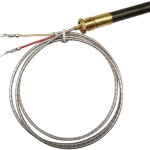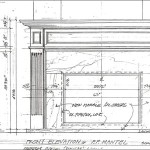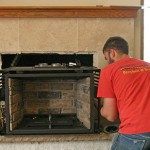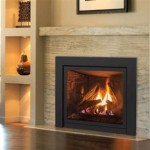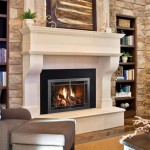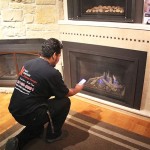Fireplace Blowers For Wood Burning Fireplace: Enhancing Efficiency and Comfort
Wood-burning fireplaces provide a source of warmth and ambiance to homes. However, a significant portion of the heat generated by a traditional fireplace can be lost through the chimney. Fireplace blowers represent a valuable accessory designed to improve the efficiency of wood-burning fireplaces by circulating heated air into the room, leading to enhanced comfort and potentially reduced heating costs. This article will explore the functionality, types, benefits, selection criteria, installation, maintenance, and safety considerations related to fireplace blowers for wood-burning fireplaces.
Understanding the Functionality of Fireplace Blowers
Fireplace blowers, also sometimes referred to as fireplace fans, are designed to redistribute the heat produced by a wood-burning fire more effectively. Traditional fireplaces rely primarily on radiant heat, which warms objects directly in front of the fire. This can lead to uneven heating, with areas close to the fireplace becoming excessively warm while other parts of the room remain cool. Fireplace blowers address this issue by pulling cool air from the room, passing it over the heated firebox (or through dedicated heat exchangers), and then blowing the warmed air back into the room. This convective heat transfer significantly improves the circulation of warm air, distributing it more evenly throughout the space and reducing temperature stratification.
The basic principle behind a fireplace blower's operation is forced convection. Natural convection occurs when warm air rises, creating a slow and inefficient circulation pattern. A blower, however, uses a fan powered by an electric motor to actively move air. This allows for a much faster and more controlled distribution of heat. The speed of the fan is often adjustable, allowing the user to control the amount of heat circulated and adjust the blower's operation to suit the desired comfort level and the intensity of the fire.
The location of the blower within the fireplace system is crucial for its effectiveness. Most fireplace blowers are designed to be installed at the bottom of the firebox, either built-in or as an aftermarket add-on. This placement allows the blower to draw in the coolest air in the room (as cool air tends to sink), maximizing the temperature difference between the incoming air and the heated metal of the firebox. Some units are designed to fit into existing spaces within the fireplace construction, while others may require minor modifications for proper installation.
Several factors influence the performance of a fireplace blower. These include the size and power of the fan, the design of the heat exchange system, the volume of air flow (measured in cubic feet per minute, or CFM), and the overall construction of the fireplace itself. A well-designed blower that is properly sized for the fireplace will provide a significant improvement in heating efficiency, while a poorly designed or improperly installed blower might offer little to no benefit.
Types of Fireplace Blowers
The market offers a variety of fireplace blowers, each designed to suit different fireplace designs, sizes, and user preferences. Distinguishing between these types is essential for selecting the appropriate blower for a specific installation.
Built-in Blowers: These blowers are integrated into the fireplace unit during manufacturing. They are designed specifically for that fireplace model, ensuring proper fit and optimal performance. Built-in blowers often feature variable speed controls and are typically quieter than aftermarket models. Due to their integrated design, they generally offer a cleaner aesthetic appearance.
Aftermarket Blowers: These are add-on units designed to be installed in existing fireplaces. They are available in a wide range of sizes and configurations to fit various fireplace models. Aftermarket blowers can be a cost-effective way to improve the heating efficiency of an older fireplace that did not originally come with a blower. However, installation can be more complex, and finding a model that perfectly fits the existing fireplace structure may require careful research and measurement.
Hearth-Mounted Blowers: These blowers sit on the hearth in front of the fireplace opening. They are designed to draw cool air from the room and blow it across the firebox, circulating the warmed air back into the room. Hearth-mounted blowers are relatively easy to install and can be a good option for fireplaces where a built-in or aftermarket blower is not feasible. However, they may be less efficient than models that are installed directly within the firebox cavity and can be visually less appealing.
Insert Blowers: These are specifically designed for use with fireplace inserts, which are self-contained heating units that are installed inside an existing fireplace opening. Insert blowers are typically mounted at the back of the insert and designed to circulate air around the firebox, maximizing heat output. They are often essential for realizing the full heating potential of a fireplace insert.
Magnetic Blowers: Magnetic blowers utilize magnetic levitation for the fan motor, resulting in significantly quieter operation and potentially longer lifespan compared to traditional motors. While often more expensive, they provide a noticeable improvement in noise reduction, making them suitable for bedrooms or living areas where quiet operation is desired.
Other differentiating factors include the materials used in construction (steel, aluminum, etc.), the type of motor (AC or DC), the availability of automatic temperature control, and the presence of features like thermal overload protection and noise reduction technologies.
Benefits of Using Fireplace Blowers
The use of a fireplace blower offers several advantages that contribute to improved heating efficiency, comfort, and overall cost savings.
Improved Heating Efficiency: By actively circulating heated air, fireplace blowers significantly increase the amount of usable heat transferred from the fireplace into the room. This reduces heat loss up the chimney and allows the fireplace to heat a larger area more effectively. The efficiency gain can translate to lower heating costs, as the primary heating system may require less reliance to maintain a comfortable temperature.
Enhanced Comfort: Fireplace blowers promote a more even distribution of heat, eliminating hot and cold spots within the room. This creates a more comfortable and consistent temperature throughout the space, making it more enjoyable to spend time near the fireplace. The ability to adjust the fan speed allows users to fine-tune the amount of heat circulated to suit their individual preferences.
Reduced Firewood Consumption: By improving heating efficiency, a fireplace blower can potentially reduce the amount of firewood needed to maintain a desired room temperature. This not only saves money on firewood purchases but also reduces the environmental impact associated with wood burning.
Increased Safety: While primarily focused on heating, blowers can indirectly contribute to safety. More effective heat distribution means the fireplace doesn't have to be operated as intensely to achieve the same level of warmth, potentially reducing the risk of overheating the fireplace and surrounding structures. Properly installed blowers also include safety features like thermal overload protection, which prevents the motor from overheating and potentially causing a fire hazard.
Quiet Operation: Modern fireplace blowers are designed with noise reduction in mind. Many models feature adjustable fan speeds, allowing users to reduce noise levels when less heat circulation is needed. Magnetic blowers, in particular, offer exceptionally quiet operation, making them suitable for noise-sensitive environments.
Extended Lifespan of Fireplace Components: Efficient heat distribution can prevent localized overheating of fireplace components, potentially extending their lifespan. This is especially important for fireplaces with brick or stone surrounds, as uneven heating can lead to cracking or damage over time.
In addition to these direct benefits, a fireplace blower can also improve the overall ambiance of the room. By creating a more comfortable and consistent temperature, it encourages people to spend more time enjoying the warmth and beauty of the fireplace.
When assessing the potential benefits of a fireplace blower, it is essential to consider the specific characteristics of the fireplace, the size of the room being heated, and individual heating preferences. A properly selected and installed blower can significantly enhance the performance and enjoyment of a wood-burning fireplace.
The selection of an appropriate fireplace blower necessitates a comprehensive understanding of fireplace dimensions, blower specifications, and safety mandates. Prioritizing safety and consulting professionals will ensure optimal functionality and longevity of the system.
Regular maintenance, including cleaning and inspection, is essential for preserving optimal performance and minimizing safety hazards. Adhering to the manufacturer's guidelines for maintenance will contribute to a reliable and long-lasting fireplace blower system.
The implementation and utilization of fireplace blowers can substantially enhance fireplace efficiency and comfort through convective heat transfer. The careful selection, proper installation, and regular maintenance of these systems are pivotal to reaping their full benefits while upholding safety standards.

Small Wood Stove Fan 4 Blade Fireplace For Burning Heat Powered Accessories Silent Operation Circulating Warm Air Non Electric Com

3 Blade Mini Fireplace Fan Furnace Air Blower For Wood Log Burner Eco Friendly Heat Powered Stove China Home Appliance Made In Com

1pc Wood Stove Fan 6 Blades Heat Powered Fireplace Accessories Non Electric Gas Log Burner Thermoelectric

Wood Stove Fan 12 Blades Heat Powered With Magnetic Thermometer Non Electric Fireplace For Burning Pellet Log Burner Silent Dual Motors Com

How To Replace Your Rsf Fireplace Blower Fan

Oscillating Wood Stove Fan Fireplace For Warm Air Saving Furnace Blower Log Burner China Made In Com

1pc Fireplace Fan Wood Stove Heat Powered Magnetic Suction Hanging Non Electric 5 Blade

Fireplace Blowers Explained How Fans Work Regency

6 Blade Fireplace Eco Friendly Fan Mini Furnace Air Blower For Wood Log Burner Heat Powered Stove China Made In Com

Stove Fan Wood Fans Fireplace Heat Powered With 4 Blade Com
Related Posts


